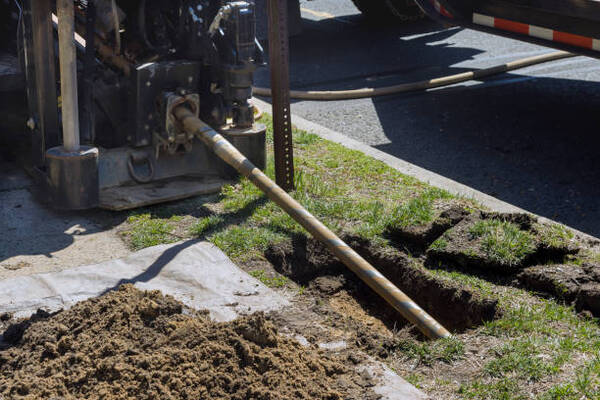- 1-905-452-8193
- Contact Us
- Member Login
- Get Listed Today
- 220,911 members

The horizontal directional drilling (HDD) process is used to install underground pipelines and utility lines. The HDD process is a type of trenchless construction, which eliminates the need for trenches by using a drill to create a pilot hole. This method of directional drilling Sydney is less disruptive than traditional trenching methods and can be used in a variety of applications, including crossing waterways, roadways, and sensitive environmental areas.
The first step of the HDD process is to determine the entry and exit points of the pilot hole. Once the entry and exit points are determined, the drill rig is set up and the drilling begins. The drill rig bores a hole through the ground using a rotating drill bit. As the drill bit turns, it grinds away the rock and soil. The drill bit is connected to a drill pipe, which carries the cuttings (ground-up rock and soil) to the surface.
The drilling fluid, also called drilling mud, is used to lubricate the drill bit and carry the cuttings to the surface. The drilling fluid is a mixture of water, clay, and chemical additives. The type of drilling fluid used depends on the type of soil being drilled.
Once the pilot hole is drilled, it is time to install the pipeline or utility line. This is done by pulling a reamer (a larger version of the drill bit) through the pilot hole. The reamer enlarges the hole to accommodate the pipeline or utility line.
Once the pipeline or utility line is installed, the hole is backfilled with drilling fluid and grout. The drilling fluid helps to support the pipeline or utility line in place and the grout seals off the hole to prevent leaks.
These are the benefits you get out of HDD:
Reduced ground disturbance.
One of the main advantages of HDD is that it can minimize ground disturbance. This is because you only need to bore a small hole rather than digging a large trench. This can be beneficial if you are working in an area where minimizing disruption is important, such as near sensitive ecological areas or in busy urban areas.
Increased accuracy.
HDD can also be more accurate than traditional trenching methods. This is because the drill operator has more control over the drill bit and can make corrections more easily if they veer off course. This can be beneficial if you need to avoid obstacles or stay within a certain area.
Increased speed.
HDD can also be faster than traditional trenching methods, especially when working in difficult terrain. This is because the operator does not have to stop and start the drill as often and can make progress more quickly.
Cost savings.
HDD can also save you money compared to traditional trenching methods. This is because it is less labour-intensive and you do not need to rent or purchase as much equipment.
HDD comes with its fair share of drawbacks as well:
Limited depth.
One of the main drawbacks of an HDD is that it is limited in terms of how deep it can bore. This means that it might not be suitable for your project if you need to bore a very deep hole.
Not always straight.
Another potential drawback of HDD is that the holes are not always perfectly straight. This means that you might have to make corrections along the way which can add to the cost and time of the project.
Requires special equipment.
HDD also requires special equipment that you might not have access to. This includes a drilling rig, drill bits, and reaming tools. If you do not have these items, you will need to rent or purchase them which can add to the cost of your project.
Skills required.
HDD also requires a certain level of skill to be done correctly. This means that you might need to hire a contractor who is experienced in this type of drilling. Otherwise, you run the risk of damaging the equipment or drill bit, which can add to the cost of your project.
The HDD process is a safe and efficient way to install underground pipelines and utility lines. It is less disruptive than traditional trenching methods and can be used in a variety of applications. If you are planning a construction project that involves underground utilities, contact a licensed contractor who specializes in the HDD process.
